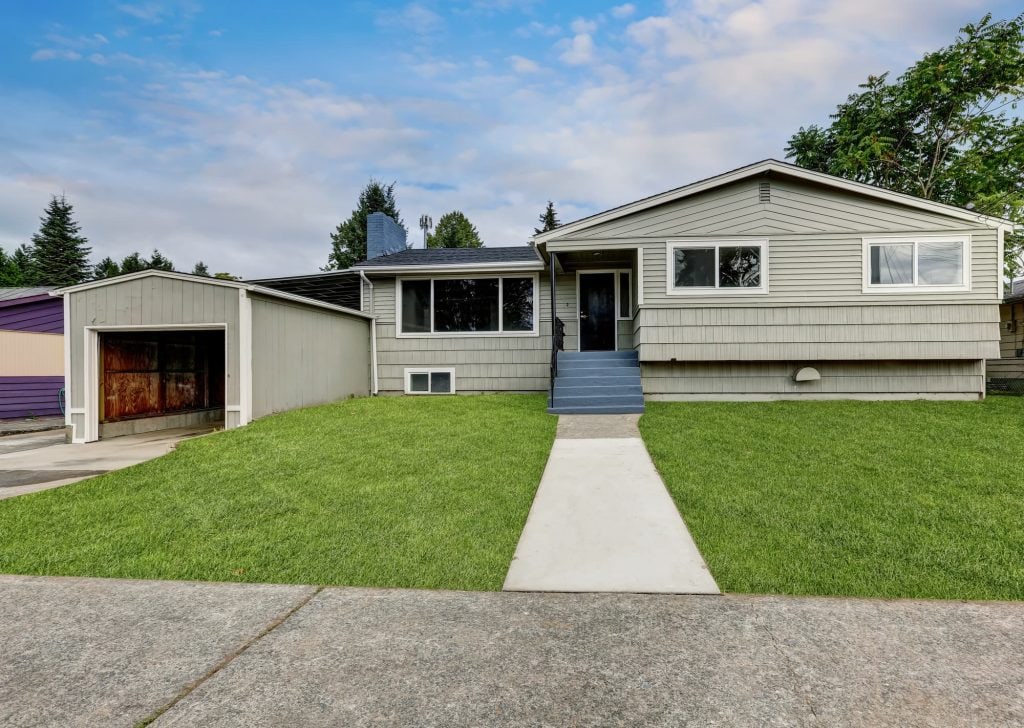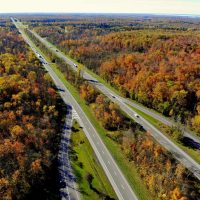Regarding exterior home design, wood siding has been a popular choice across North America for centuries. The types of siding offer natural appeal, durability, and various popular colors, making it a preferred option for many homeowners.
The vast array of siding styles and materials ensures a perfect fit for every home. Any home can achieve a timeless and elegant look with the right type of wood siding. Discover the top 5 types of wood siding and its benefits in our guide below.
Clapboard Siding: Traditional Charm and Timeless Beauty
For a historical option, try clapboard siding. Also known as lap siding, it comprises overlapping long, thin boards. Its robust nature and classic appeal make it a popular choice in American homes.
Besides its striking visual appeal, clapboard offers several benefits. Its durability ensures protection against weather damage and insect damage. Furthermore, clapboard siding is recognized for its moisture-resistant properties when given regular maintenance.
Installing clapboard involves each board overlapping the other, ensuring water runoff. Maintenance involves inspecting for damages and repainting to combat the elements.
Shingle Siding: Rustic Elegance and Natural Texture
Shingle siding, often crafted from real wood shingles, is the rustic yet refined exterior siding choice. It offers a naturally textured appearance, making it a favorite among homeowners who seek a distinctive look from a range of stained colors. From cedar shakes to white pine, the choices are diverse.
Among the notable advantages of shingle siding is its resilience. Designed to endure harsh climates, it’s robust and offers added insulation, making it an energy-efficient siding option. Proper installation requires precision, ensuring each shingle is appropriately spaced to prevent water damage.
Periodic maintenance, including staining or painting, will keep the shingles vibrant and protected in a variety of colors.
Board-and-Batten Siding: Rustic Charm and Visual Interest
For vertical siding, consider board-and-batten, known for its distinctive design pattern where wide boards with narrow strips, or battens, cover the seams. Traditionally it’s made from real wood; popular options include pine siding and redwood siding.
Thanks to the vertical installation, this type of siding has enhanced insulation and is a perfect choice for those wishing to introduce architectural depth to the exterior of their home.
Following the manufacturer’s guidelines and ensuring a moisture barrier beneath is crucial when considering installation. Regular maintenance, like painting or staining, can retain its aesthetic appeal as with other wood siding styles.
Log Siding: Natural Warmth and Cozy Appeal
Log siding provides the perfect solution for those dreaming of a cabin-like ambiance. It brings the essence of the wilderness to homes through hand-hewn or milled logs. Different wood species, like cedar or pine, offer various textures and finishes to customize the home’s look.
A primary advantage of log siding is its insulating capabilities. The thick, natural material keeps homes warm in winter and cool during summer. Though the installation process might be more demanding due to its bulk, the result is undeniably captivating. Maintenance ensures longevity, including sealing against moisture and insect damage.
Tongue-and-Groove Siding: Timeless Elegance and Smooth Finish
For a sleek and polished look in a range of wood species, consider tongue-and-groove wood siding exteriors. The name refers to its jointed design, where each wooden board features a ‘tongue’ on one side and a ‘groove’ on the other. Each wood species has an added benefit:
- Cedar has insect-resistant qualities
- Pine has a light color and fine grain
- Poplar shines with a beautiful, durable finish
The interlocking design also ensures that moisture remains at bay, protecting against water damage. Also, the seamless design means fewer gaps, which adds an extra insulation layer to homes.
For installation, the tongue of one board fits snugly into another groove, creating a smooth and uninterrupted appearance requiring a degree of precision. Each board must align perfectly to achieve the desired finish and requires proper maintenance to protect against the elements and preserve its charm.
Key Takeaways
Navigating the realm of wood siding reveals a treasure trove of options, whether you own your house or are in search for a new property. Whether you choose the historical elegance of clapboard siding, the rustic charisma of shingle, board-and-batten, and log sidings, or the refined beauty of tongue-and-groove, there’s a style for every preference.
When selecting the ideal wood siding for your home, consider the desired aesthetic, installation process, maintenance needs, and the siding’s capacity to protect your home against nature’s elements.
Natural wood siding remains an iconic choice for homeowners because of its practical benefits, underscoring its undying popularity.
You don’t have to do this alone. Connect with an expert agent at eXp for more insights or to sign up to get alerts for a new property listing. Embrace the charm of natural wood siding and enhance your home’s curb appeal today.
FAQs: Wood Siding
If you still have questions about wood siding, here are answers to some commonly asked questions.
What is the best wood for exterior siding?
Western Red Cedar and Redwood are top choices of wood exterior siding due to their durability, resistance to decay, and the ability to add a solid color finish.
What is the cheapest wood siding option?
Pine siding is the cheapest wood siding option, but requires more maintenance than other options.
What is the name of the wood siding on houses?
Clapboard, bevel, or lap siding is a common real wood siding used on homes.
What is the average price of wood siding?
Costs vary, but on average, wood siding ranges from $5 to $10 per square foot, including installation.
What wood siding doesn’t rot?
Redwood and cedar are naturally rot-resistant, making them excellent choices for longevity.
Is wood cheaper than vinyl siding?
Generally, vinyl siding is cheaper upfront, but wood offers better long-term value due to its durability.
How long does engineered wood siding last?
With proper maintenance, engineered wood siding can last 20 to 30 years.
What are two major types of wood siding?
Clapboard (lap siding) and shingle siding are the most common types.
How much does wood siding cost for a 2,000 sq ft house?
Depending on the type and quality, costs can range from $10,000 to $20,000 for a 2,000 sq ft house.
Can you leave wood siding untreated?
While possible, untreated wood is susceptible to moisture, insect damage, and decay. Regular maintenance is advised.








